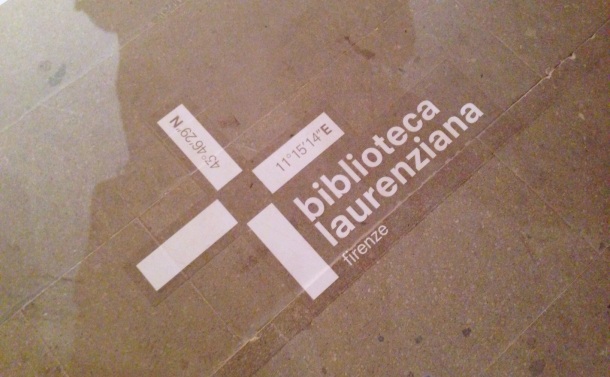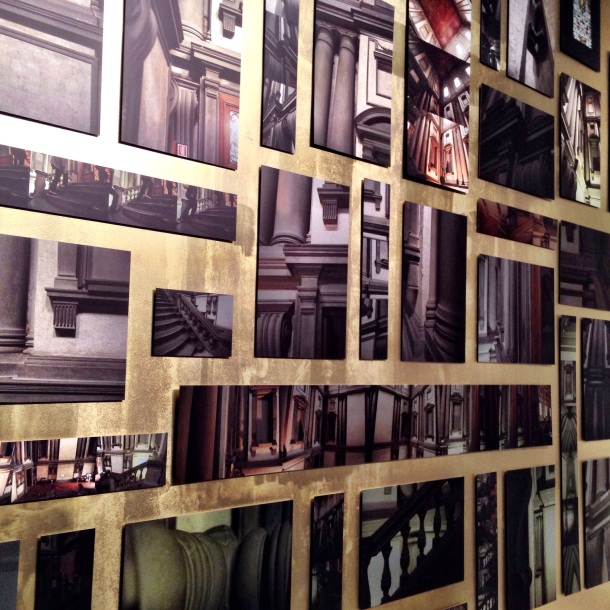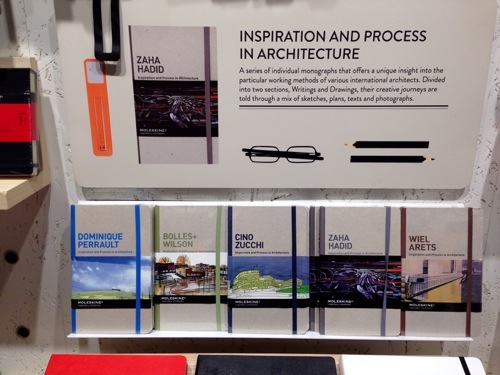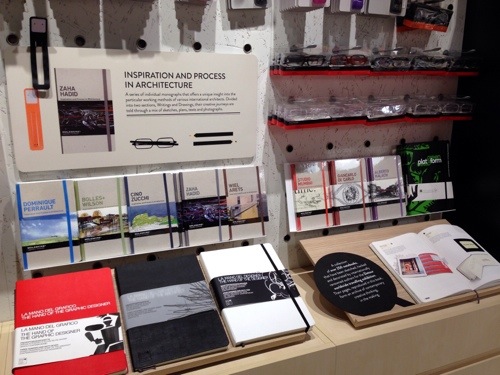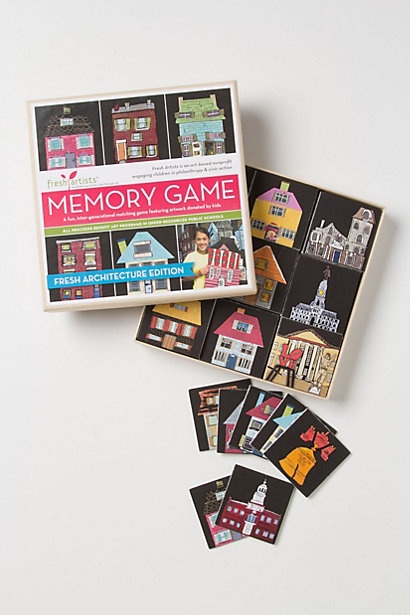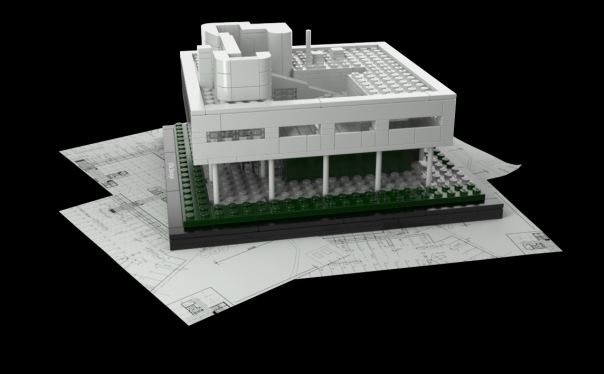Rem Koolhaus shares his thought about Micheangleo’s Bibilioteca Laurenziana. I had visited this place while studying abroad in Italy. We had studied this building in architectural history. I recall thinking it was great to see a building I learned from books and lectures. Seeing this installation inspired me to return to this building and experience this building again.
(The following is a transcript from the installation. Compared with the others, the star men was adhered in the floor and very wide. I could not take a picture of in its entirety and be able to read it so I captured it in three segments and switched back and forth between each photo.)
* * * * *
“In the fall (of) 2006, I felt a sudden urge to revisit, or visit for the first time, the Italian Renaissance. Once I began ,my life in architecture’, just out of school educated by graduates of the Courtauld and, once, even by Anthony Blunt himself. I was confident that I had a relatively good understanding of its intent, repertoire, and effects. But that confidence was deflated by each physical confrontation with its artifacts.
Twenty-five years of this deflation produced a sense of almost complete de-familiarization. With each encounter ‘the Renaissance’ became more perplexing. So in 2006, I went to Italy again, in an ultimate effort to understand. By far the most disturbing space I experienced on this journey was vestibule of the Laurentian Library, by Michelangelo. The space was terrifying, almost like a nightmare. Nothing worked, everything was ‘wrong’. But the sum of all it’s dysfunctionalities was gripping. It was as if the outside skin of a palace had been stripped off and used to line an inner courtyard – folded, condensed, even crumbled. All proportions were off in this heavy-handed compression.
It’s space was blatantly an interior, but strangely it offered the experience of an exterior, defined by four different facades through which you could enter four different destinations. Can you compare the violence of the artist Michelangelo’s intervention in architecture with some contemporary artists’ more timid involvements in the discipline? Michelangelo takes each architectural element and forces it into new shapes and relationships. He respects no rules and ridicules the ‘lessons’ architects have applied to their own profession. He breaks down and re-imagines the wall, the window, the door in an area not bigger than a living room, dominated by a huge sculpture that pretends to be a staircase.
For contemporary artists and architects the lesson of the Laurentian Library is perhaps that mannerism is a dish best eaten cold and in small doses. To convey this ‘brutal beauty’, I invited Charlie Koolhaus to record as photographer and interpret as a sociologist two kinds of sacrilege – Michelangelo’s of architecture, and the visiting tourists of Michelangelo’s.” RK
Have you traveled to Italy and visited this building or perhaps studied it? What were your impressions of the Library? Do you agree with Mr. Koolhaus?
